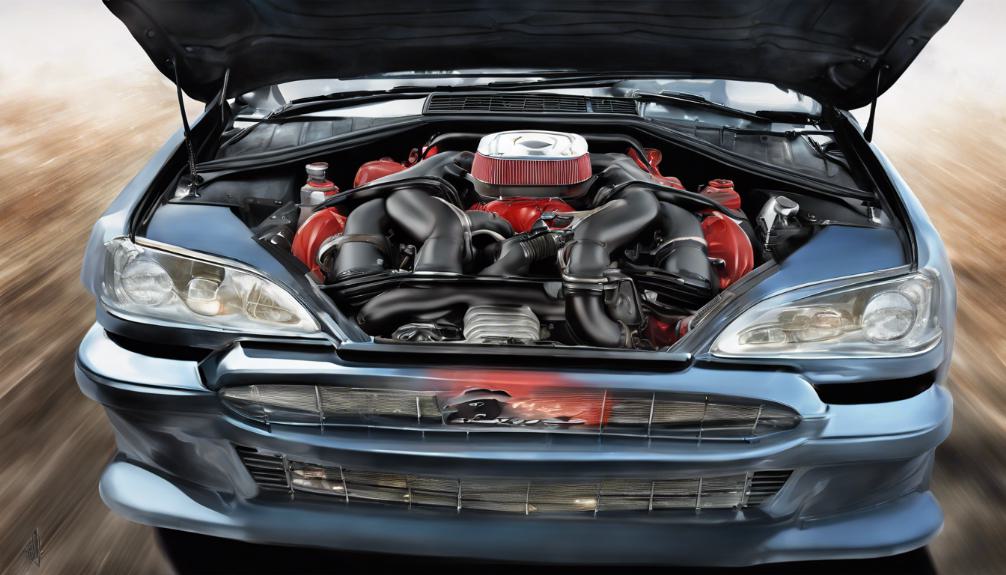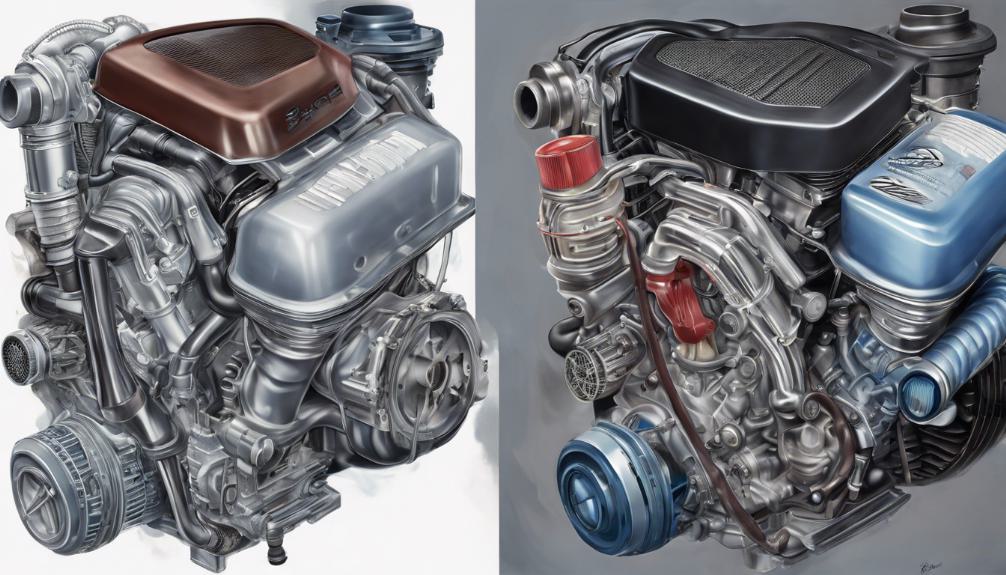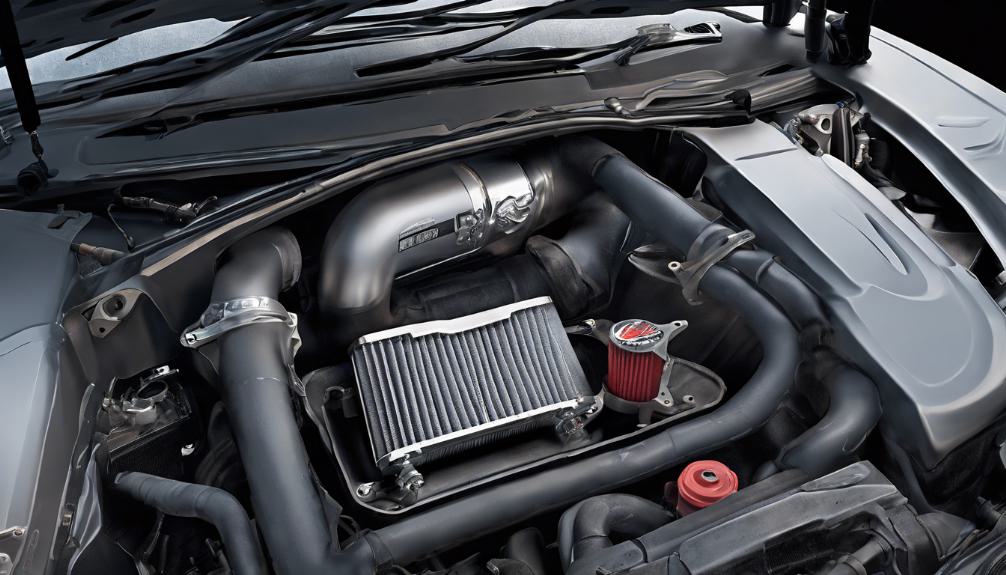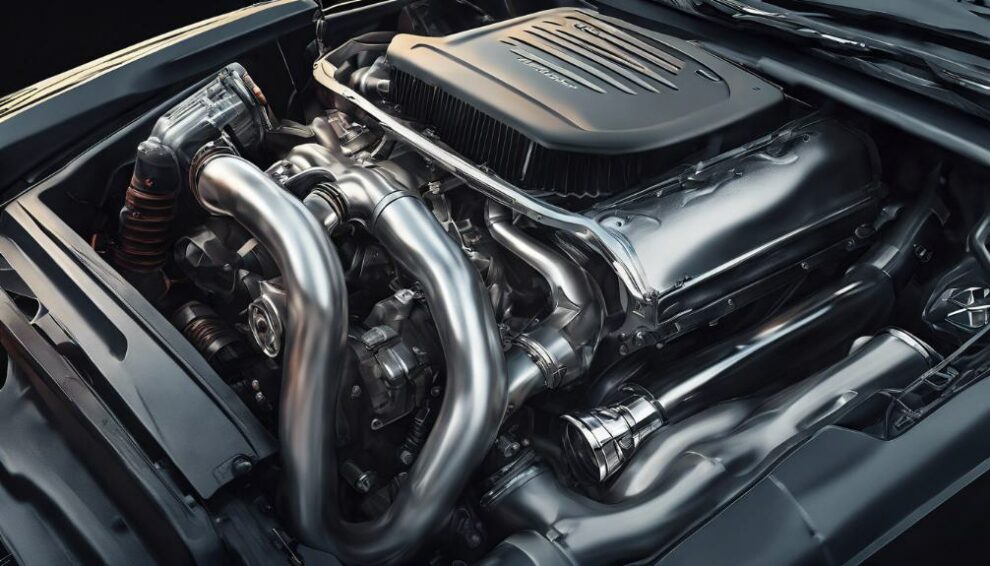To boost your vehicle’s performance, cold air intakes increase engine efficiency by drawing in cooler, denser air. This optimizes combustion dynamics, enhancing airflow and increasing air density. The result?
Improved engine performance, horsepower gains, and enhanced throttle response.
Choosing the right cold air intake involves evaluating compatibility, considering materials, checking filtration systems, and ensuring proper fitment.
During installation, disconnect your car battery, remove old components, securely install the new filter, and follow the manufacturer’s instructions.
Maintain your intake by regularly cleaning the filter and inspecting for debris to enhance engine and fuel efficiency while preventing issues. Learn more about optimizing your vehicle’s performance.
What You Need to Know
- Cold air intakes draw cooler, denser air for optimal combustion dynamics and increased horsepower.
- They enhance airflow, maximize combustion efficiency, and boost engine power for improved performance.
- These intakes increase air density, optimize airflow dynamics, and enhance throttle response.
- Proper fitment and compatibility with the vehicle are crucial factors to consider when choosing cold air intakes.
- Regular maintenance, like cleaning filters and inspecting for debris, ensures long-term benefits like enhanced fuel efficiency.
Benefits of Cold Air Intakes

By installing a cold air intake, you can experience a noticeable boost in performance for your vehicle. Engine efficiency is a key benefit of cold air intakes.
By delivering cooler and denser air to the engine, these upgrades optimize combustion dynamics, resulting in improved fuel combustion and overall efficiency.
This optimized combustion process not only enhances engine efficiency but also leads to power enhancement.
The increased air density provided by cold air intakes improves airflow to the engine, translating into enhanced horsepower, torque, and throttle response.
Specifically, for Chrysler 300C models, cold air intake upgrades are game-changers for maximizing the full potential of these vehicles.
The upgrades significantly improve combustion efficiency and increase horsepower, providing a more dynamic driving experience.
Similarly, Chevy Cruze cold air intakes play a pivotal role in enhancing performance by optimizing combustion dynamics, increasing engine efficiency, and ultimately improving fuel economy.
Upgrading to a cold air intake system can bring about substantial benefits in terms of both engine efficiency and power enhancement.
How Cold Air Intakes Work
Cold air intakes operate by drawing cooler, denser air from outside the engine bay to maximize combustion efficiency.
By replacing restrictive factory air intake systems with smoother, wider tubes, these intakes enhance airflow dynamics.
This alteration reduces air temperature, increasing air density, which in turn improves engine performance.
The optimized air intake conditions achieved by cold air intakes lead to increased efficiency in combustion processes, ultimately boosting horsepower and torque output.
Also, the design of cold air intakes minimizes restrictions and turbulence, allowing the engine to breathe more efficiently. This enhanced airflow dynamics result in improved power delivery and overall performance of the vehicle.
Cold air intakes play a vital role in ensuring that the engine receives a sufficient and steady supply of cool, dense air, which is essential for enhanced combustion and increased engine efficiency.
Performance Gains With Cold Air Intakes

Achieving notable performance gains with cold air intakes involves optimizing airflow dynamics to enhance combustion efficiency and boost engine output.
By introducing colder, denser air into the engine, cold air intakes increase the oxygen supply during combustion, resulting in improved performance enhancement.
This leads to an increase in engine power, with horsepower gains ranging from 5 to 20 hp and torque improvements of 10 to 25 lb-ft.
Furthermore, the enhanced combustion process facilitated by cold air intakes can also contribute to better fuel economy by reducing fuel consumption and emissions.
Apart from the functional benefits, cold air intakes also offer aesthetic advantages. They can enhance the engine’s sound, creating a deeper and louder engine roar that many automotive enthusiasts appreciate.
In addition, the installation of a cold air intake can provide a sleek visual upgrade under the hood, adding to the overall appeal of the vehicle.
These combined benefits make cold air intakes a popular choice for those looking to improve both the performance and aesthetics of their vehicles.
Factors to Consider When Choosing Cold Air Intakes
To make an informed choice when selecting cold air intakes, prioritize evaluating compatibility with your vehicle’s make and model for proper fitment.
When considering cold air intakes, construction materials play an important role in durability and performance.
Look for options made from materials like aluminum, known for its lightweight properties and resistance to corrosion.
Effective air filtration systems are essential for maintaining engine health, ensuring contaminants are kept out of the system.
Check for high-flow filters, which enhance air intake, leading to improved combustion efficiency and overall performance.
Also, during the selection process, consider if you prefer self-installation or professional assistance to guarantee the best outcome.
Installation Process of Cold Air Intakes

Before starting the installation process for cold air intakes, make sure the car battery is disconnected for safety and to prevent electrical issues.
Begin by removing the old intake components such as the air filter, hoses, and sensors to facilitate a smooth installation.
When installing the new air filter, guarantee it’s securely fitted, and use clamps to connect the intake hoses tightly to avoid air leaks.
Properly secure the intake tube and sensors to maintain peak performance and functionality. Troubleshooting tips include checking all connections for tightness and making sure there are no obstructions in the intake system.
For installation tips, follow the manufacturer’s instructions carefully and refer to your vehicle’s manual for specific guidance.
Regularly cleaning and maintaining the new intake system is essential to ensure efficient operation and longevity.
Remember to conduct periodic inspections to address any issues promptly and keep your cold air intake working at its best.
Maintenance and Long-Term Benefits of Cold Air Intakes
After successfully installing your cold air intake system, maintaining its longevity and maximizing benefits through regular maintenance is crucial for peak performance and engine efficiency.
To maintain your cold air intake properly, follow these steps:
- Filter cleaning: Regularly clean and inspect the filter for debris buildup to guarantee ideal airflow.
- Inspect for debris: Check for any debris that may have bypassed the filter and clean it out to prevent engine damage.
- Engine efficiency: Proper maintenance guarantees consistent airflow, leading to improved engine efficiency over time.
- Fuel efficiency: Long-term benefits of cold air intakes include enhanced fuel efficiency due to better air filtration.
- Prevent issues: Regular maintenance can prevent problems like reduced horsepower and engine stress, prolonging the life of your engine and intake system.
As an Amazon Associate we earn from qualifying purchases.










